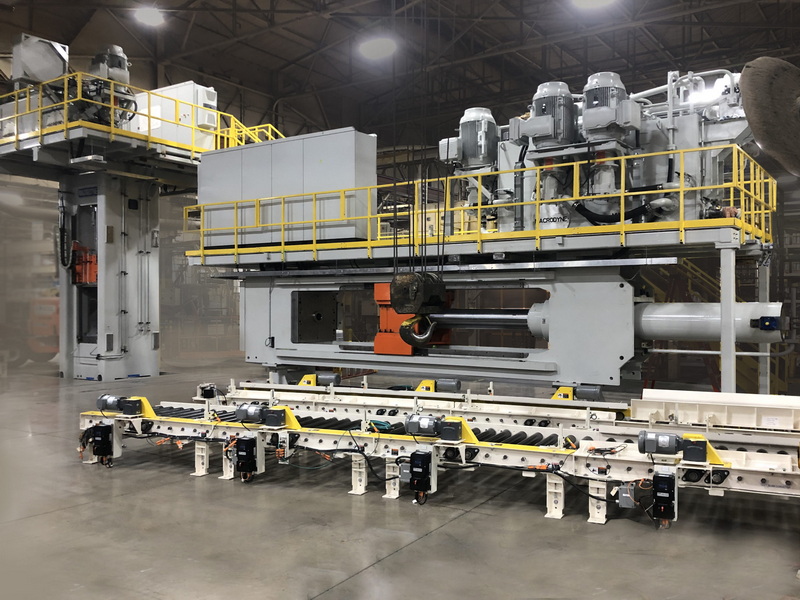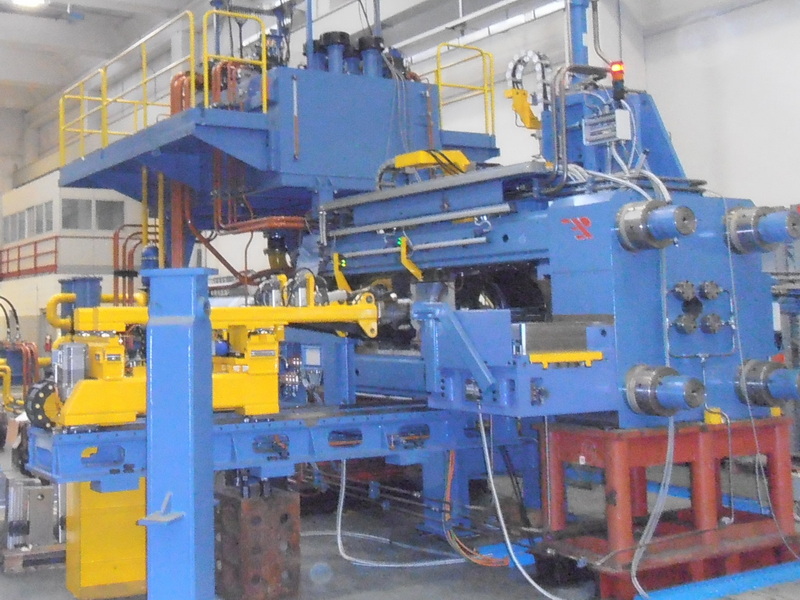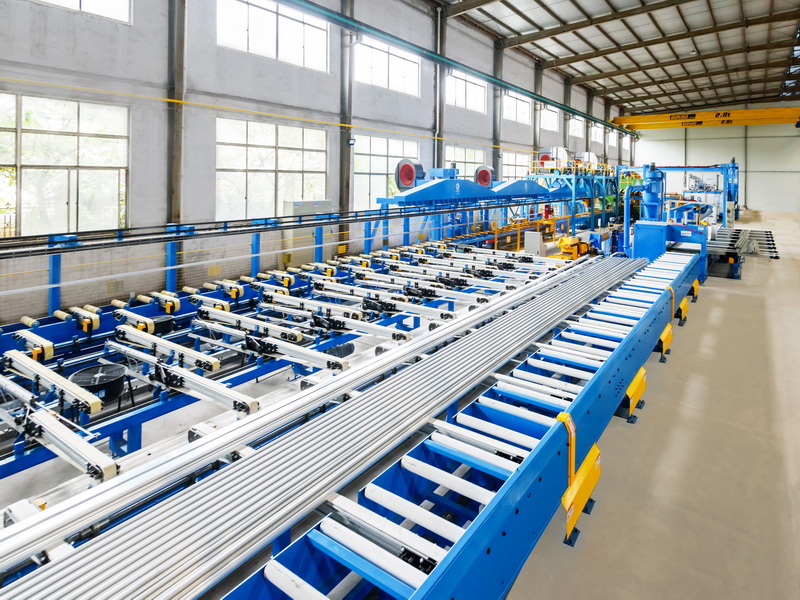Content Menu
● Introduction
● The Aluminum Extrusion Process
● Benefits of Aluminum Extrusion
>> Lightweight and Strength Advantages
>> Design Flexibility and Customization Options
>> Cost-Effectiveness in Production
● Applications of Aluminum Extrusion
● Types of Aluminum Extrusion Machines
>> Hydraulic Presses
>> Mechanical Presses
● Innovations in Aluminum Extrusion Techniques
● Choosing the Right Aluminum Extrusion Die
● Conclusion
● Related Questions
>> 1. What materials can be extruded using an aluminum extrusion press?
>> 2. How does the aluminum extrusion process compare to other manufacturing methods?
>> 3. What are the environmental benefits of aluminum extrusion?
>> 4. Can aluminum extrusions be anodized or painted?
>> 5. What industries benefit the most from aluminum extrusion?
Introduction
Aluminum extrusion is a vital manufacturing process that transforms aluminum alloy into various shapes and profiles. This process is widely used across multiple industries due to its versatility, efficiency, and cost-effectiveness. At the heart of this process is the aluminum extrusion press, a powerful machine that plays a crucial role in shaping aluminum into desired forms. In this article, we will explore the key benefits of using an aluminum extrusion press in manufacturing, highlighting its significance in modern production environments.

The Aluminum Extrusion Process
The aluminum extrusion process involves forcing heated aluminum alloy through a die to create a specific cross-sectional shape. The process begins with heating the aluminum billets to a temperature that makes them malleable. Once heated, the billets are placed in the extrusion press, where a ram pushes the aluminum through the die. The result is a continuous length of aluminum profile that can be cut to the desired length.
The aluminum extrusion press is equipped with various components, including a hydraulic system, a die holder, and a cooling system. The hydraulic system provides the necessary force to push the aluminum through the die, while the die holder secures the die in place. After extrusion, the aluminum profiles are cooled, typically using air or water, to solidify their shape.
Benefits of Aluminum Extrusion
Lightweight and Strength Advantages
One of the most significant benefits of using an aluminum extrusion press is the lightweight nature of aluminum. Aluminum is known for its high strength-to-weight ratio, making it an ideal material for various applications. This characteristic is particularly advantageous in industries such as aerospace and automotive, where reducing weight can lead to improved fuel efficiency and performance.
Aluminum's lightweight properties do not compromise its strength. Extruded aluminum profiles can be designed to withstand significant loads while remaining lightweight. This combination of strength and lightness allows manufacturers to create products that are both durable and efficient.
Design Flexibility and Customization Options
Aluminum extrusion offers unparalleled design flexibility. The extrusion process allows for the creation of complex shapes and profiles that would be challenging or impossible to achieve with other manufacturing methods. Designers can create intricate designs tailored to specific applications, enhancing the functionality and aesthetics of the final product.
Moreover, the aluminum extrusion press can produce custom dies, enabling manufacturers to create unique profiles that meet their specific needs. This level of customization is particularly beneficial in industries such as construction, where unique architectural designs are often required.
Cost-Effectiveness in Production
Using an aluminum extrusion press can lead to significant cost savings in production. The efficiency of the extrusion process allows for high-volume production with minimal waste. Since the process produces continuous lengths of aluminum profiles, manufacturers can optimize material usage and reduce scrap.
Additionally, the speed of the extrusion process means that manufacturers can produce large quantities of products in a shorter time frame. This increased productivity translates to lower labor costs and faster turnaround times, making aluminum extrusion an economically viable option for many businesses.
Applications of Aluminum Extrusion
Aluminum extrusion is utilized in a wide range of industries, showcasing its versatility and adaptability. Some common applications include:
- Construction: Aluminum extrusions are widely used in building facades, window frames, and structural components due to their strength and resistance to corrosion.
- Automotive: The automotive industry employs aluminum extrusions for lightweight components, improving fuel efficiency and performance.
- Electronics: Aluminum extrusions are used in the manufacturing of heat sinks, enclosures, and other electronic components, benefiting from aluminum's thermal conductivity.
- Aerospace: The aerospace industry relies on aluminum extrusions for structural components, where weight reduction is critical for performance.

Types of Aluminum Extrusion Machines
There are several types of aluminum extrusion machines, each designed for specific applications and production needs. The two primary types are hydraulic and mechanical presses.
Hydraulic Presses
Hydraulic presses are the most common type of aluminum extrusion machines. They use hydraulic fluid to generate the force needed to push the aluminum through the die. Hydraulic presses are known for their ability to handle large billets and produce high-quality extrusions. They are versatile and can be used for various aluminum alloys and profiles.
Mechanical Presses
Mechanical presses utilize a mechanical system, such as a flywheel, to generate the force required for extrusion. These presses are typically faster than hydraulic presses and are suitable for high-speed production. However, they may have limitations in terms of the size of the billets they can handle.
Innovations in Aluminum Extrusion Techniques
The aluminum extrusion industry is continually evolving, with new technologies and techniques emerging to improve efficiency and product quality. Some recent innovations include:
- Advanced Die Design: Modern die design techniques, such as computer-aided design (CAD), allow for more precise and complex die shapes, resulting in better-quality extrusions.
- Automated Systems: Automation in the extrusion process, including robotic handling and monitoring systems, enhances productivity and reduces labor costs.
- 3D Printing Integration: The integration of 3D printing with aluminum extrusion allows for rapid prototyping and the production of complex geometries that were previously difficult to achieve.
Choosing the Right Aluminum Extrusion Die
Selecting the appropriate aluminum extrusion die is crucial for achieving the desired profile and quality. Several factors should be considered when choosing a die:
- Profile Design: The complexity of the desired profile will influence the die design. More intricate profiles may require specialized dies.
- Material Properties: Different aluminum alloys have varying properties, which can affect the extrusion process. The die must be compatible with the specific alloy being used.
- Production Volume: High-volume production may necessitate a more robust die design to withstand the increased wear and tear.
Conclusion
The aluminum extrusion press is an essential tool in modern manufacturing, offering numerous benefits that enhance production efficiency, product quality, and design flexibility. From its lightweight and strong properties to its cost-effectiveness and versatility across various industries, aluminum extrusion continues to play a pivotal role in shaping the future of manufacturing. As technology advances, the potential for aluminum extrusion will only grow, making it a vital process for businesses looking to innovate and improve their production capabilities.

Related Questions
1. What materials can be extruded using an aluminum extrusion press?
Aluminum extrusion presses are primarily designed for aluminum alloys, but they can also be used for other materials such as magnesium and certain plastics, depending on the machine's specifications.
2. How does the aluminum extrusion process compare to other manufacturing methods?
Aluminum extrusion is often more efficient than methods like casting or machining, as it produces less waste and allows for complex shapes to be formed in a single step.
3. What are the environmental benefits of aluminum extrusion?
Aluminum is highly recyclable, and the extrusion process generates minimal waste. Using aluminum can also lead to energy savings in applications like transportation due to its lightweight properties.
4. Can aluminum extrusions be anodized or painted?
Yes, aluminum extrusions can be anodized or painted to enhance their appearance and corrosion resistance, making them suitable for various applications.
5. What industries benefit the most from aluminum extrusion?
Industries such as construction, automotive, aerospace, and electronics benefit significantly from aluminum extrusion due to its lightweight, strength, and versatility in design.






















